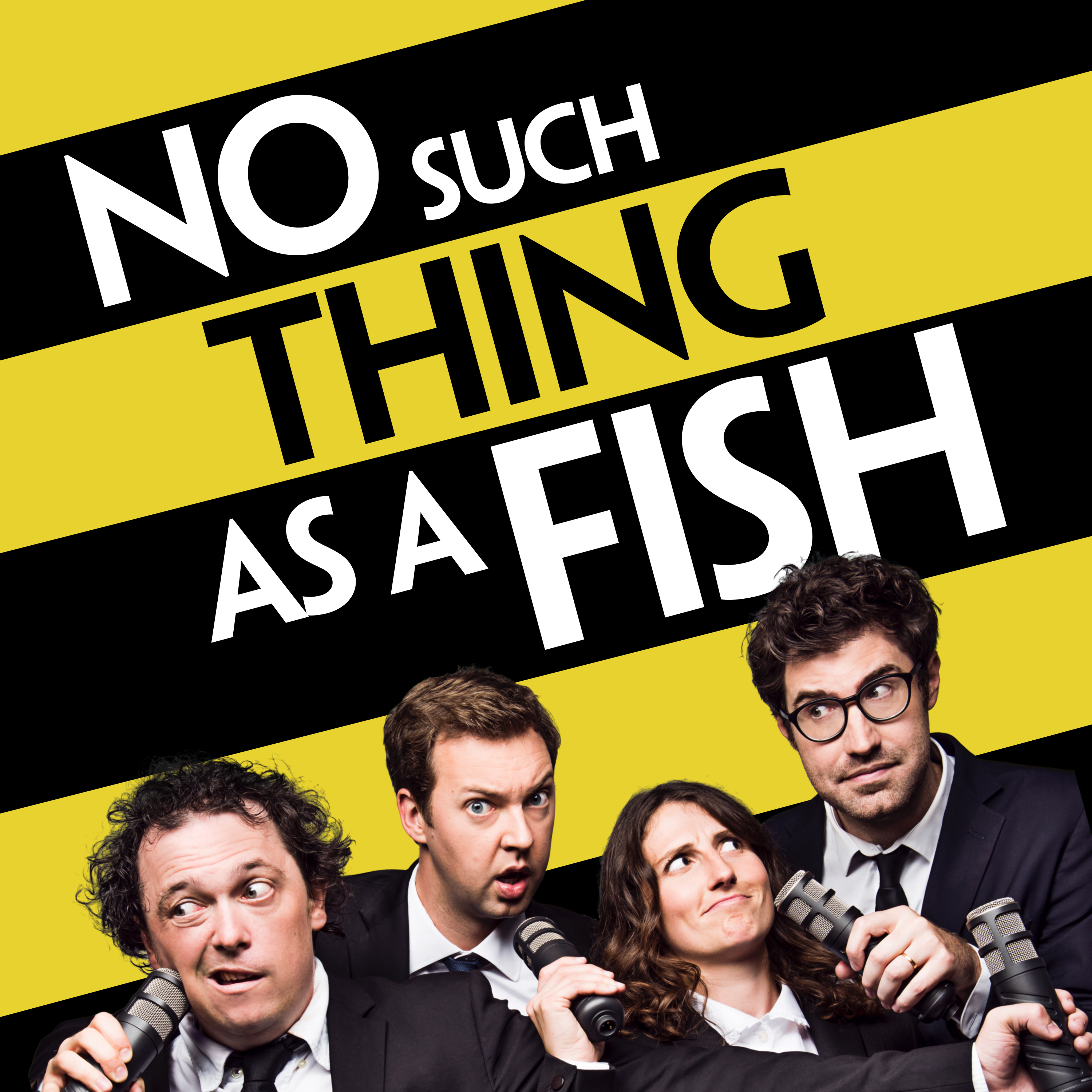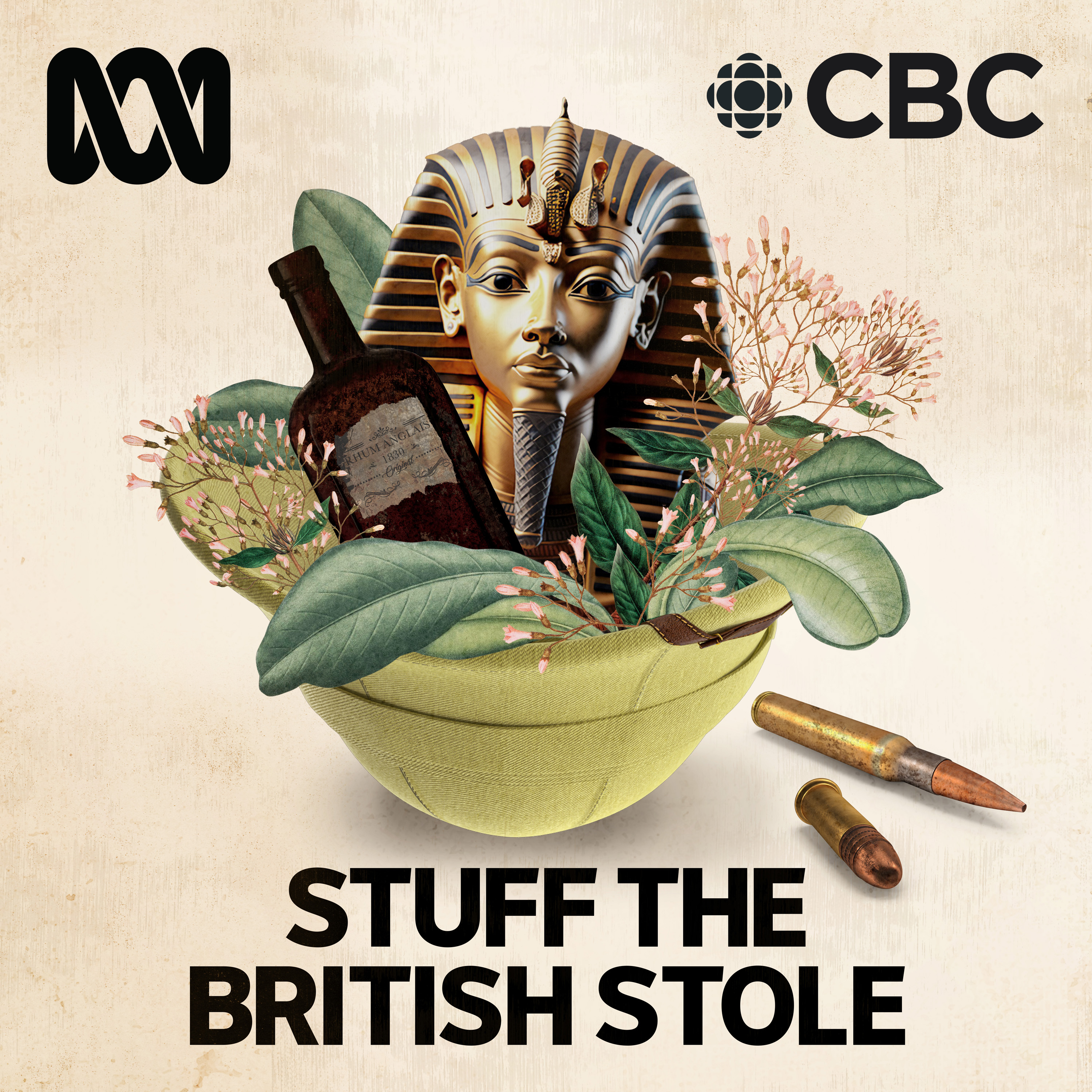
Piano, finally
Piano Finally is a podcast by an old bloke who is learning the piano, finally. I cover the process of learning the piano and music theory as an adult learner. I also review piano books, hardware and other materials from an adult learner's perspective.
Piano, finally
Episode 44 - Choosing for the Year
🎹 Episode 44 – Choosing for the Year
Welcome back to Piano, Finally, the podcast by an old bloke finally getting around to learning the piano. In this episode, I share a bit of everything – from an odd experience learning the school song to choosing my piano pieces for the year ahead, and even a book review for those exploring pop piano.
🎵 The School Song Saga
I kicked off the holidays with a curious challenge: trying to play the school song. Despite knowing it well, my first attempt sounded way off – but, oddly enough, it fixed itself the next day. Still working on the fingerings, though.
📺 Stage+ – A Treasure Trove of Classical Documentaries
I talk about the value of Stage+, a high-quality classical music streaming platform from Deutsche Grammophon. It offers not just performances but excellent documentaries, including “Magic Moments in Music” and stories about greats like Bernstein, Karajan, Tsujii, Lang Lang, and Trifonov.
🎼 Choosing My Pieces for the Year
Devi and I selected four main pieces for the coming months – all aimed at expanding my technique and musical range.
- 🎶 Der Vogelfänger bin ich ja (Mozart / arr. Barrie Carson Turner)
A bright, fast piece introducing Alberti bass and runs in G major.
🎧 Listen here - 🎹 A Wild Chase (Wynn-Anne Rossi)
Tricky fingering, dual bass clefs, and a fast tempo – definitely a challenge.
🎧 Listen here - 🕰️ Going Baroque (Glenda Austin)
My first foray into baroque-style music, complete with counterpoint and complexity.
🎧 Listen here - 🎤 Hallelujah (Jeff Buckley)
From the Rockschool Contemporary Piano book – a modern piece with a strong rhythmic focus.
🎧 Listen here
📘 Book Review – The Pop Piano Book by Mark Harrison
A Discord recommendation, this 500-page book is a full course on pop piano playing. It starts with theory and moves into genre-specific chapters like R&B, gospel, and rock. The book’s practical but bulky – maybe the PDF version is the way to go.
📖 Find it at Harrison Music
🎧 Progress Report
Two pieces are now performance-ready: Spindler’s Canon and Türk’s Bagatelle in F. I’m still working on Afternoon Snooze and Blackout Blues – both tricky in their own ways. Recorded on the Kawai NV10 with Pianoteq 8’s U4 upright model.
You can contact me:
- via email at david@pianofinally.show; this is probably the best option
- the show website, www.pianofinally.show
- Instagram and Threads @pianofinally
- and on YouTube
- all the podcast directories - list
- here's the RSS feed
Some of the links to books and other items mentioned in the podcast may affiliate links for Amazon or other providers. If you use one of these links, a commission may be paid to me at no additional cost to you. Thank you if you use a link.
All reviews of products, websites and services are unpaid, and no sponsorship has been received for any content on this podcast.
Episode 44 – Choosing for the Year
G’day, everyone. I’m David Reidy; welcome to Piano, finally, a podcast by an old bloke who is getting around to learning the piano, finally.
[Crab Canon]
Welcome
Welcome to show forty-four. Thank you very much for joining me. If this is the first time you’re listening to the podcast, I hope you enjoy what you hear. If you’ve returned for another episode, then thanks. If you too are learning the piano or another musical instrument, let me know how you’re going with it. You can contact me at david@pianofinally.show.
School has finished for the term, and I will now be on holidays for the next two weeks, which will be pleasant, it has been a long and busy term. On the last Wednesday of the school term, there was an assembly, and I found myself sitting in front of the school band. At the end of the assembly, I was able to get a copy of the vocal score for the school song. After all, I should be able to play it.
The piece was composed forty years ago by Kevin Bates and arranged by Bradley Lee for the founding of the school, and it is a fairly simple melody designed for group singing. It shouldn’t be too hard to pick up, right? Well, sort of right. It was a bit weird.
When I finally got to sit down at the piano and give it a try, it sounded wrong. I know the song well, after all, it gets sung at every school assembly, but I could not get my playing to sound even remotely close. I didn’t have a lot of time, so I moved on to my normal practice. The next day, I went to practice again and played the school song, and it sounded fine. I have no idea what I did differently, but whatever it was, it worked.
I’m still working on the fingerings because, as I have a vocal score, there are no suggested fingers. The opening melody stretches over an octave in D major, and I need to make sure I have a finger available for the F♯. Here are the opening bars.
[School Song]
Stage + – The Documentaries
I have mentioned Deutsche Grammophon’s Stage + service before. It is a reasonably expensive streaming service, but if you like high-quality classical music and video, then it may be worth checking it out. But it’s not all performances. Stage + also includes access to a very large range of excellent music documentaries that stretch back over decades.
The topics in the documentaries range from stories about music to stories about the performers. In particular, there is a series called Magic Moments in Music, which documents performances of significance. There is one about Vladimir Horowitz’s performance in Moscow during the Cold War which is a fascinating look at how music was used as part of diplomacy.
Deutsche Grammophon has many of the world’s top classical artists on their books, and so there are quite a number of documentaries about them, their performances and their approach to music. Contemporary artists such as Nobuyuki Tsujii, Lang Lang, Vikingur Ólafsson and Daniil Trifonov all feature, as do many of the artists who made Deutsche Grammophon the name it is today.
I grew up listening to recordings of Leonard Bernstein and Herbert Von Karajan, and there are several excellent films about them and their music. Additionally, there are many of their audio and video performances elsewhere in Stage +.
One minor problem with some of the documentaries is that they are not all in English, and some of them don’t have subtitles. That may be a problem, but then, the music doesn’t need translation, so it depends a bit on the type of documentary you’re watching. IF you’re looking for some music adjacent videos to watch, Stage + is a great resource.
Just before finishing, Stage + now includes music that is published by Hyperion. If you’ve been listening to the Chopin Podcast with Ben Laude and Garrick Ohlsson, then you’ll know that you can find Garrick’s complete set of all Chopin’s music on Hyperion, and a lot of it is now available on Stage +.
[Crab Canon]
Essay – Choosing for the year
Over the last couple of lessons, Devi and I chose the next lot of music to learn for the next twelve months. The pieces I have been working on are getting to the stage where they are no longer pieces I am learning. Instead, they are pieces I’m refining. Refining is important, and I’m going to keep at them until they are at the stage where I can play them confidently at a performance level. But at the same time, I also want to move on to something more challenging. So, how did we go about it, and what did we end up choosing?
I suppose I should outline my thinking for selecting pieces. I’m learning the piano, so the pieces should teach me something, but they should also teach me more than just some more advanced techniques, although they clearly should do that, too. Perhaps they should cover a greater range of keys, maybe something that is minor rather than major, and perhaps genres that are further from the Romantic and Classical pieces I’ve been playing so far. I quite enjoyed moving over to the Blackout Blues piece, even though I’m not a big jazz and blues fan; it was nice to make some music that sounded different.
The first step was to gather some resources. As everyone knows, spending money on books doesn’t count as spending money, so heading to one of the large music stores was an easy decision. Given that there is a lot of music available online, why go to a music store? Because it is convenient. I want music that is a bit harder than the level I am currently on but not so hard that I’ll get annoyed, so having a wide range of graded music makes sense.
I already have the AMEB Grade One repertoire book, which contains classical pieces that are on the current syllabus for the AMEB exams. The preparatory-level pieces I’ve been learning are from the equivalent ANZCA book, and they are also classically oriented.
The books I bought for this purpose, I’ve mentioned before, they are the AMEB Piano For LeisureGrade One series and the RSL Rockschool Grade One for Contemporary Piano. This gives me over forty pieces from which to choose, and they cover a wide range of genres and techniques.
The first piece I have chosen is Der Vogelfänger bin ich ja from Mozart’s The Magic Flute. I already know and like the piece, and the piano arrangement by Barrie Carson Turner is nice. It is played quicker than any of the pieces I have learned so far and introduces some of the standard elements of classical music, such as Alberti Bass and short runs of notes up the scale. It is in G, so there are F♯s to remember in 4/4 time with some semiquavers in the scale runs. So there is enough to learn to make it worthwhile, and it’s a nice piece of music to be able to play when someone asks to hear something.
The second piece is A Wild Chase by Wynn-Anne Rossi. It is not a piece I was familiar with, and we chose it mostly because it will definitely provide a challenge for fingering and note reading.
Instead of the usual pair of a treble clef and a bass clef making up the grand staff, A Wild Chase has a pair of bass clefs for most of the piece, with a few bars of paired treble clefs. As I am more comfortable with the treble clef, this should help me become more familiar with the bass version.
The fingering is also more complicated, with the melody being shared between the hands and over a wide range of the keyboard. The piece is in 6/8, and the first tempo marking is Fast! with an exclamation mark. Towards the end of the piece, the tempo is marked As fast as you can! again, with an exclamation mark. One simplification in the piece is that the first four bars are repeated as the second four bars but raised an octave and written on the treble clef.
The piece doesn’t have very much in the way of dynamics, but it does have a very strict rhythm which will be the tricky part to get right, I’m sure. Also, getting the bars to sound as two groups of three notes is also going to take some practice – but isn’t that why I chose it?
The third piece is Going Baroque by Glenda Austin. This is the most complex-looking of the pieces, and my first go at trying something in the baroque style. Going Baroque not actually from the sixteenth century, indeed the word “Baroque” wasn’t used until the nineteenth century, no, Glenda Austin is a contemporary composer and high school music teacher. This means I don’t have to have a discussion about whether the music should have dynamic markings.
The piece certainly has a baroque sound, and I’m enjoying the little bit of it I have started with. I expect that this piece is the one that will take the longest to get comfortable with, but I also think it is the one that will improve my playing the most.
The final piece is from the Rockschool book. I wanted a piece that wasn’t classical. As I have mentioned, I’ve been looking at adding a Nord Stage 4 stage piano to my keyboard collection and learning more about pop and rock keyboard playing to add to the classical music. So, I’ve chosen the Jeff Buckley piece Hallelujah, which was made famous by Leonard Cohen and has been covered by almost everyone. It’s a simple piece with lots of repeated notes, making the rhythm really important to the song, and so it will help with that aspect of my playing.
So those are the four main pieces, along with the school song, that you are going to start hearing in the progress section of each episode. I’m looking forward to getting frustrated learning some new skills. I’ve included YouTube links to all four of the pieces in the show notes so you can hear what they are meant to sound like.
https://www.youtube.com/watch?v=YBcxDLdJkC0&list=PL3ZvqowoOOKSOG4pkWTzW5re_oeTNohiq&index=6
https://www.youtube.com/watch?v=4SFxpF1xcbs&list=OLAK5uy_mF45YX2EZflWg0mRKqoaJ5rVDYV07yBtM
https://www.youtube.com/watch?v=ANnPP9KFges&list=OLAK5uy_mF45YX2EZflWg0mRKqoaJ5rVDYV07yBtM&index=9
https://www.youtube.com/watch?v=JJHaV8Omwl0
https://www.ameb.edu.au/catalogsearch/result/?q=Piano%20For%20Leisure%20Grade%201
https://www.rslawards.com/products/piano-grade-1/
[Crab Canon]
Review – The Pop Piano Book
I buy a lot of books, because, as I said before, buying books doesn’t count as spending money. The book I’m reviewing this week came from another suggestion from Bill Hilton’s Discord group. There are always discussions about different resources, and as many of the members are also adult learners, the recommendations are usually pretty good.
The Pop Piano Book by Mark Harrison was recommended by a number of people in Discord as being a good way to understand how to use chord patterns to accompany the melody of a song. It’s a big book at five hundred pages, and it is designed to be followed from beginning to end. I looked at some of the later chapters, and they very much rely on your understanding of the earlier material.
The book is divided into two main sections. The first quarter of the book covers the theory needed to understand scales and modes and then chord constructions from a contemporary music point of view. The longer second section looks at how these systems are applied to different contemporary pop genres.
The first section of the book is very hands-on. Every time Mr Harrison explains a concept, he accompanies it with examples and often suggests ways to practice until you master the concept. When the book moves into the chord section, there are many exercises to try to ensure that, as a player, they eventually become almost automatic.
The need to follow along with the book leads to one problem: the book is too unwieldy to use at the piano, or at least on the music stand of the piano, and besides, a 500-page perfect bound book won’t stay open regardless. The book is available as a downloadable PDF, and that might be a better solution if you are serious about working through the material as a course.
The genres covered in the second part of the book are pop ballad, pop rock, new age, R&B ballad, R&B Funk, country, and slow and fast gospel. In each chapter, the skills built up in the first part are put to use, making music of the particular genre. There is a lot of material here, probably enough to fill a couple of years of learning.
Additional video-based courses, audio examples and supporting materials accompany the book. You can even buy the MIDI files for all 782 musical examples in the book.
I bought my copy from Amazon as it wasn’t available locally, but you can also buy the book directly from the author at Harrison Music; there is a link in the show notes.
https://www.harrisonmusic.com/store/c3/Pop_Piano_Book_Accessories.html
[Crab Canon]
Closing
If you’d like to contact me, email is the best way. You’ll find me at david@pianofinally.show and the website at www.pianofinally.show. In both cases, pianofinally is all one word. The show is also on Instagram and available as audio-only on YouTube. You can subscribe via any popular iOS or Android podcast application or from directories such as Apple Podcasts, Spotify, or YouTube. I also post an excerpt and link for each episode as an Instagram reel.
If you’re learning an instrument, let me know where you are in your journey. What’s going well, and what are the challenges?
[Crab Canon]
Progress
Two of the pieces I have been working on are at the stage where I can play them from memory and at the correct speed, so they are moving to one play per practice session. I’ll leave them out of the progress section for a while; they are Fritz Spindler’s Canon and Daniel Gottlob Türk’s Bagatelle in F. I am still working on Andrew Cragg’s Afternoon Snooze and Blackout Blues, so they are included this week. For Afternoon Snooze, I’m working at keeping the timing consistent and correct, while Blackout Blues still needs work moving smoothly between the different blocks that I have learned. Both the pieces were recorded in one take using the Kawai NV10 as the keyboard and Pianoteq 8 on the M4 Pro Mac Mini, emulating the U4 upright piano in player mode.
[Practice pieces]
Podcasts we love
Check out these other fine podcasts recommended by us, not an algorithm.

Connected
Relay
Upgrade
Relay
No Such Thing As A Fish
No Such Thing As A Fish
We Can Be Weirdos
Global
Stuff The British Stole
ABC and CBC
The iDeveloper Podcast
Steve Scott (Scotty) & John FoxRaven On: A Pop Culture Podcast
Natalie Bochenski & Stuart Layt
Smart Enough to Know Better
Dan Beeston & Greg Wah
TopMusic Piano Podcast
Tim Topham
The Chopin Podcast
Garrick Ohlsson and Ben Laude



